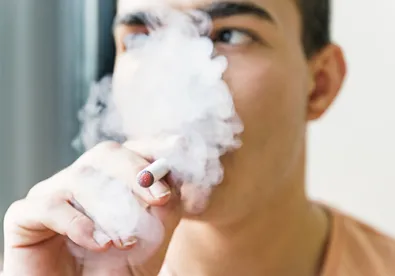E-cigarette liquids come in 7000 flavors—many of them sweet like bubble gum and cherry. But there is only one flavor, menthol, in traditional cigarettes. Why? Because flavoring in cigarettes was banned by the United States under The Tobacco Control Act of 2009 to reduce the numbers of young smokers.
According to Mitch Zeller, J.D., director of the FDA’s Center for Tobacco Products, “about 90 percent of adult daily smokers smoked their first cigarette by the age of 18,” and the “ban….is vital to protect future generations from a lifetime of addiction” to tobacco like products.
Earlier this year the FDA tried to institute a ban on flavorings in e-cigarettes too, but the section was removed from new legislation by the White House.
The general story is that a lack of scientific data was introduced to support a ban. The FDA presented extensive scientific documentation including statistics of “a dramatic rise in youth and young adult use of typically flavored tobacco products, like e-cigarettes and waterpipe tobacco.”
Vaping proponents cloud the youth vaping issue by loudly declaring the use of flavoring is to appeal to traditional smokers so they switch to the (equally addictive) nicotine delivery system presented by e-cigarettes. This, they argue, is to help people quit smoking but that claim is unproven.
Australia recently renewed its ban on nicotine liquid e-cigarettes following the recommendation of the Australian Medical Association’s president, Dr. Michael Gannon, who stated “there is no evidence that e-cigarettes work as a deterrent” to traditional cigarette smoking.
Vaping companies have recently also begun promoting a Yale University working paper from the National Bureau of Economic Research, emphasizing study results that show a reduction in e-cigarette flavors would reduce the number of overall smokers by 5.2 percent but increase traditional cigarette smoking. Not mentioned are qualifications in the study: It only applies to current smokers and heavy smokers at that. Also, it does not address youth smokers and youth non-smokers who are at the highest risk to be influenced by e-cigarette flavorings.
The study analysis suggests that when there are no flavor choices, the flavored e-cigarette users will turn to combustible cigarettes that have flavoring. However, in the U.S. at least, there are no flavors available in traditional combustible cigarettes except menthol. The study did not yet empirically evaluate what happens when there is no flavor alternative. The study does suggest that the flavorings appeal to traditional smokers who may switch. However, in addition to not addressing at risk youth smokers, the study also contained no comparison on the level of nicotine addiction between combustible and vaping nicotine delivery systems. Reports do show that both combustible cigarettes and e-cigarettes that deliver nicotine are supporting the addiction.
More studies are needed to really understand the impact of using e-cigarettes. What we know today from other studies is that the liquids contain toxins that cause cancer, DNA damage, and nicotine – which is not only poisonous, but addictive; these mirror the dangers of traditional cigarette smoking. Moreover, the use of flavoring appeals to younger people and may lead them to smoke or become addicted to nicotine when they otherwise would not. Until the industry addresses these burgeoning dangers, and makes changes to the products to protect consumers, e-cigarettes should be considered harmful and avoided.



 />i
/>i
